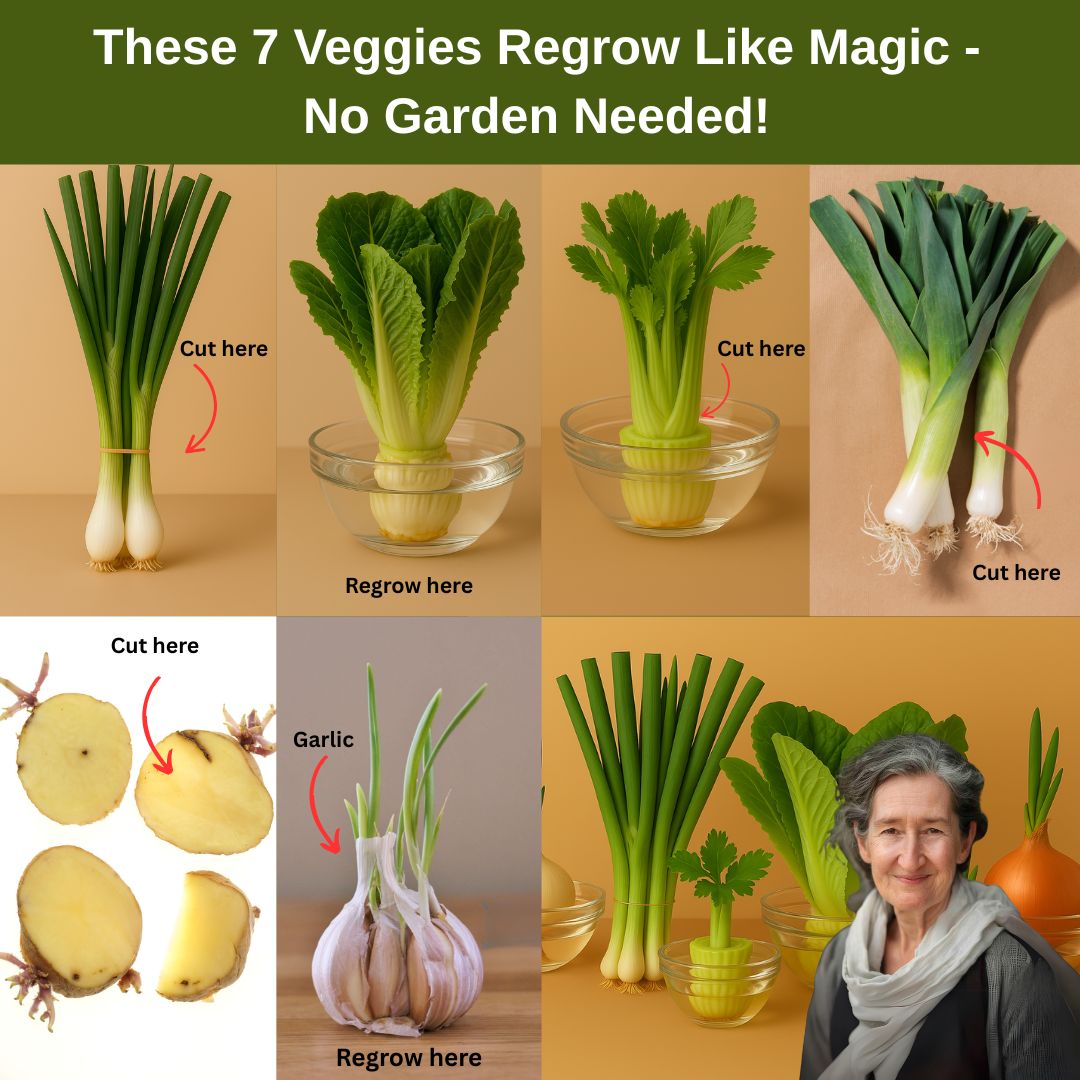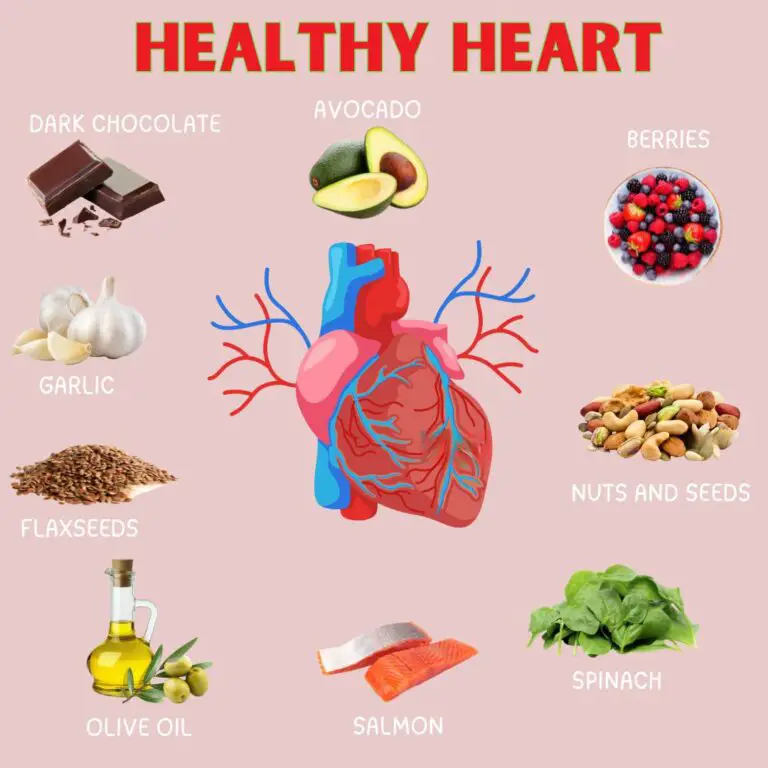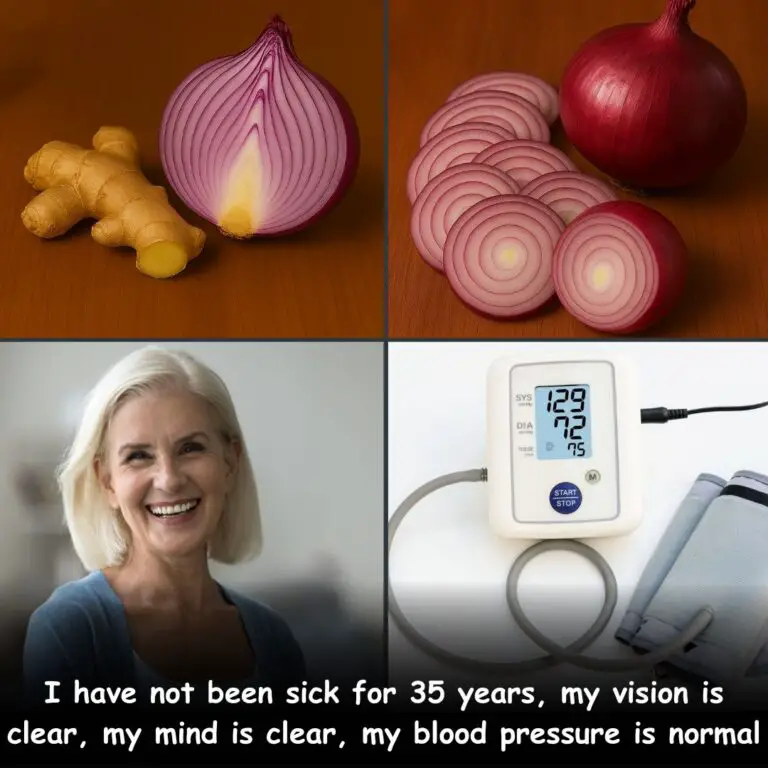7 Vegetables You Can Buy Once and Regrow Forever
Introduction
Imagine walking into your kitchen and harvesting fresh vegetables straight from your countertop or backyard — without ever having to buy seeds or plants again. Sounds like a gardener’s dream, right? The good news is that this is entirely possible with certain vegetables that you can buy once and regrow indefinitely. These self-renewing veggies save you money, reduce waste, and bring a sustainable touch to your daily meals.
Whether you’re a seasoned green thumb or just starting your gardening journey, regrowing vegetables at home offers an exciting way to connect with your food, embrace eco-friendly habits, and enjoy fresh produce year-round. From crunchy celery stalks to vibrant green onions, these vegetables regenerate rapidly, giving you a constant supply with minimal effort.
Why You’ll Love This Recipe for Regrowing Vegetables
The beauty of regrowing vegetables lies in its simplicity, cost-effectiveness, and the satisfaction it brings. You don’t need a sprawling garden or fancy equipment — just a little patience, basic tools, and the kitchen scraps you’d otherwise toss away.
Regrowing vegetables:
- Saves money: Instead of repeatedly buying fresh produce, you get to grow your own with almost no extra cost.
- Reduces food waste: By repurposing vegetable scraps, you cut down on the waste sent to landfills.
- Encourages sustainability: Growing your own food at home reduces your carbon footprint and dependency on commercial agriculture.
- Delivers freshness: There’s nothing like harvesting crisp, home-grown greens and stalks when you need them.
- Teaches gardening basics: Regrowing veggies is a fun, hands-on way to learn about plant biology and care.
Ingredients
Here are the seven vegetables you can buy once and regrow forever:
- Green Onions (Scallions)
- Lettuce (Romaine or Butterhead)
- Celery
- Bok Choy
- Carrot Greens
- Garlic
- Basil
These veggies grow easily from scraps such as root ends or stems, making regrowing quick and simple.
Necessary Tools
To get started with regrowing vegetables, you’ll need a handful of everyday tools:
- Clear glass jars, bowls, or containers for water propagation
- Small pots or planters with drainage holes (for transplanting)
- Potting soil or a seed-starting mix
- A sunny windowsill or a grow light for adequate sunlight
- A sharp kitchen knife or scissors to cut scraps cleanly
- A spray bottle for misting plants (optional)
Ingredient Swaps and Additions
Depending on your space, climate, and tastes, feel free to swap or add these options:
- Instead of celery, try fennel or kohlrabi scraps for regrowing.
- For green onions, you can also regrow leeks or shallots.
- If you want a leafy green beyond lettuce, experiment with spinach or Swiss chard regrowth.
- For herbs, aside from basil, try cilantro, mint, or parsley for continuous harvest.
These swaps add variety and cater to what’s available in your kitchen or local market.
Step-by-Step Instructions to Regrow Vegetables
Step 1: Harvest Smartly
When using vegetables for regrowing, always keep the base or root end intact. For example, when eating green onions, leave about 2 inches of the white root end with the roots attached.
Step 2: Place in Water
Put the root ends or bottom few inches in a jar or bowl filled with fresh water. Make sure the roots are submerged but the leaves stay above water. Change the water every 2–3 days to prevent stagnation and mold.
Step 3: Provide Adequate Sunlight
Place your jars or pots near a sunny window with 6–8 hours of indirect sunlight daily. If natural light is scarce, supplement with a grow light.
Step 4: Wait for Growth
Within a few days, you’ll notice green shoots or leaves beginning to sprout. Let the plants grow until they reach 4–6 inches or are big enough to harvest again.
Step 5: Transplant to Soil (Optional)
For sturdier growth, transplant your regrowing vegetables to pots filled with potting soil once roots develop. This helps produce more robust plants for longer-term harvest.
Step 6: Harvest and Repeat
Cut only what you need, leaving enough leaves and roots intact for continuous regrowth. This cycle can last indefinitely with proper care.
If you want a deeper dive into indoor regrowing techniques, The Spruce’s guide on regrowing vegetables is an excellent external resource.
Pro Tips for Success
- Always use fresh, healthy vegetable scraps for regrowing to avoid disease or mold.
- Maintain clean containers and change water regularly to keep bacteria at bay.
- Use filtered or distilled water if your tap water is heavily chlorinated, as chlorine can hinder regrowth.
- Be patient: some vegetables like carrots take longer to regrow, while green onions can sprout quickly.
- Prune yellowing or dead leaves promptly to encourage healthy new growth.
For advice on creating the ideal indoor growing environment, the National Gardening Association’s guide is a trusted source.
Serving Suggestions
Once your regrown vegetables flourish, enjoy them in various delicious ways:
- Green onions: Sprinkle fresh on salads, soups, or baked potatoes.
- Lettuce: Toss in crisp garden salads or wrap sandwiches.
- Celery: Chop and add crunch to stews, dips, or juice recipes.
- Bok choy: Stir-fry with garlic and soy sauce for a quick side.
- Carrot greens: Blend into pesto or add to soups for a herby note.
- Garlic greens: Use as a mild garlic flavor in sautés or as garnish.
- Basil: Add fresh to pasta, pesto, or as a fragrant topping on pizzas.
Want more recipe ideas using homegrown produce? Check out our Creative Recipes Using Fresh Homegrown Vegetables.
Storing and Reheating
If you have leftovers or want to preserve your regrown vegetables:
- Store fresh leafy greens like lettuce and basil in perforated plastic bags in the fridge, keeping them crisp up to 4 days.
- Green onions and celery stalks store well upright in a jar of water, covered loosely with a plastic bag, for up to a week.
- Avoid freezing leafy greens as they lose texture; instead, use them fresh or dry them for herbs.
- Reheat cooked regrown veggies gently to preserve flavor and texture—steaming or quick sautés work best.
Nutritional Information
Here’s a snapshot of the nutritional benefits you get from these vegetables:
- Green onions: Rich in vitamin K, vitamin C, and antioxidants.
- Lettuce: Low calorie, high in fiber, vitamin A, and folate.
- Celery: Excellent source of vitamin K, potassium, and hydration.
- Bok choy: High in vitamins A, C, and calcium.
- Carrot greens: Contain vitamins A, C, and iron (use in moderation).
- Garlic: Known for immune-boosting sulfur compounds and antioxidants.
- Basil: Provides vitamin K, manganese, and anti-inflammatory compounds.
For more information on the environmental benefits of growing your own food, check out Food Print’s overview on home gardening.
FAQs
1. How long does it take for vegetables to regrow?
Most start showing new growth within 3–7 days, though some, like carrots, may take longer.
2. Can all vegetables be regrown from scraps?
No, only certain vegetables like those on this list regrow reliably from scraps or root ends.
3. Do regrown vegetables taste the same as store-bought?
Yes! They often taste fresher and more vibrant since they’re harvested at home.
4. Can I regrow vegetables outdoors?
Absolutely. Once roots develop, transplant outdoors if the climate suits the plant.
5. Is regrowing vegetables safe to eat?
Yes, as long as you use clean containers and healthy scraps, regrown veggies are perfectly safe.
For additional regrowing tips, see GrowVeg’s best vegetables to regrow in water or soil.
Conclusion
Regrowing vegetables is one of the simplest, most rewarding ways to become more self-sufficient, reduce waste, and enjoy fresh flavors daily. With just seven easy-to-regrow vegetables—from green onions to basil—you can create a sustainable mini-garden right on your kitchen counter or windowsill.
Not only do these plants cut down on grocery trips, but they also bring joy and satisfaction as you watch your scraps transform into thriving greenery. Ready to start your regrowing adventure? Grab your favorite veggies, a few jars, and get growing!







